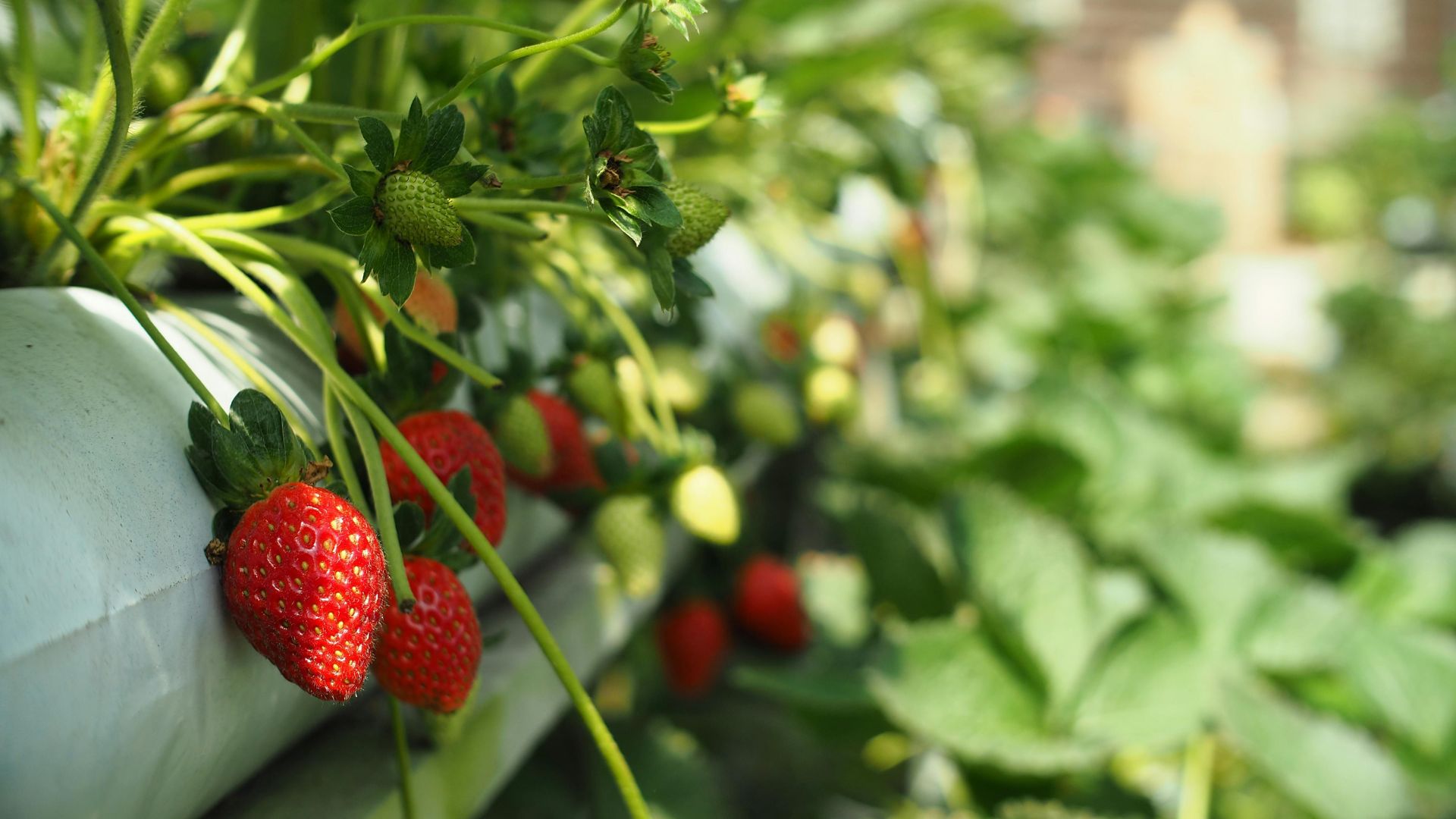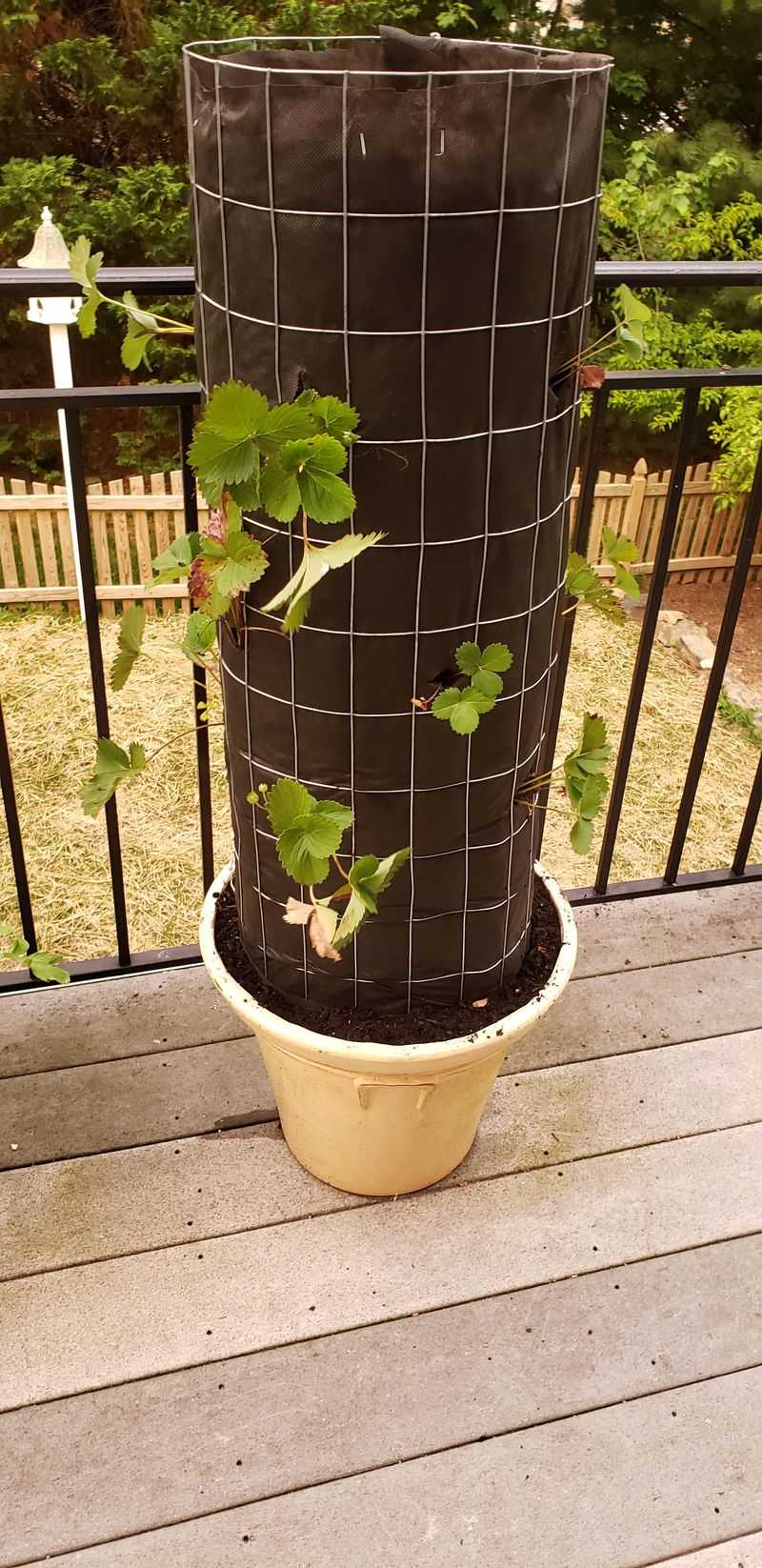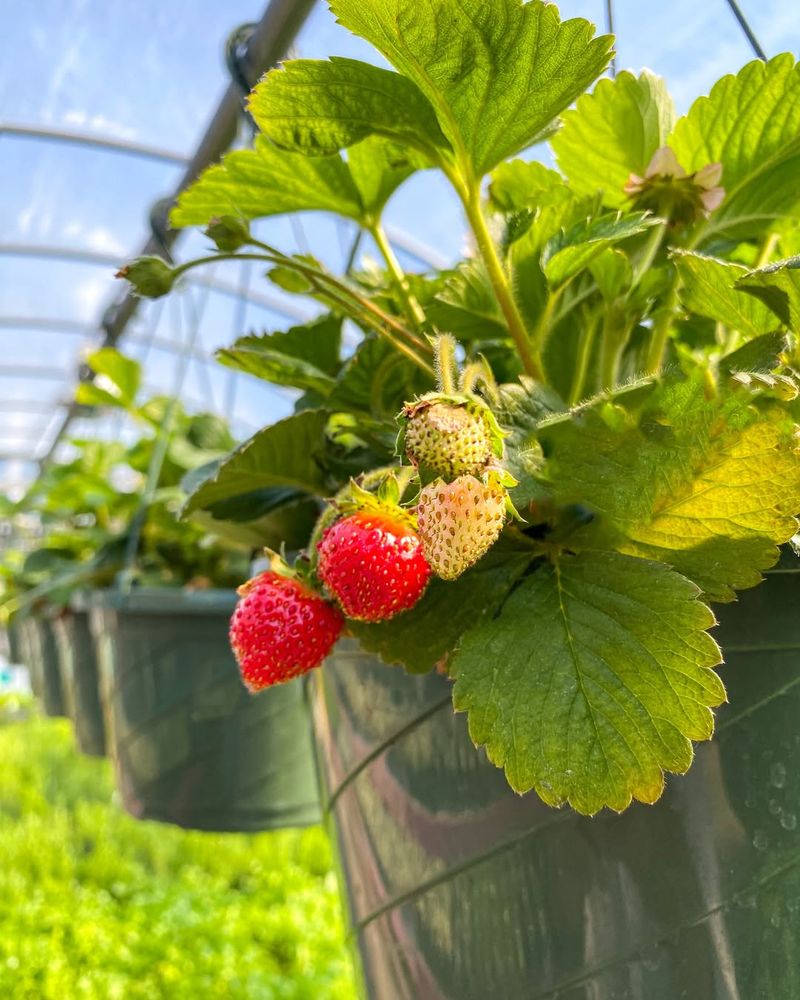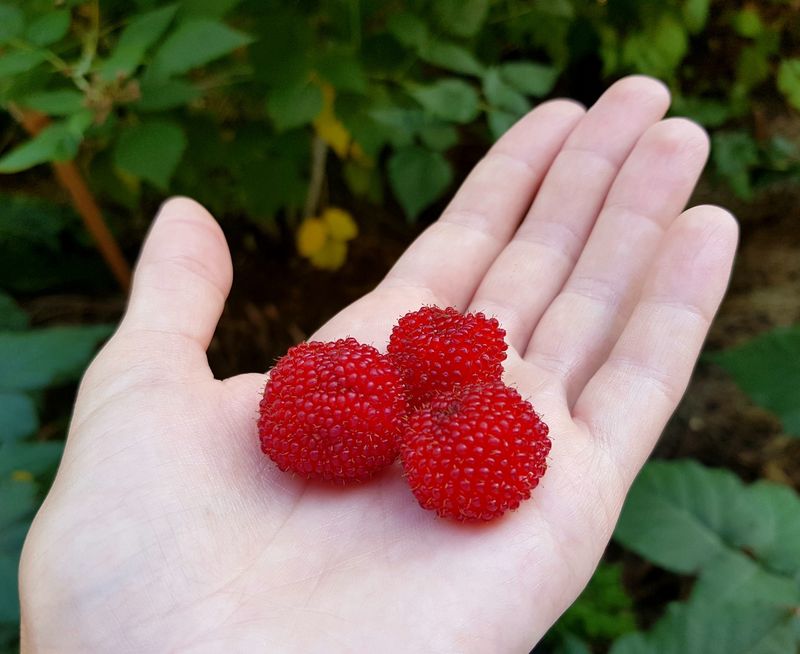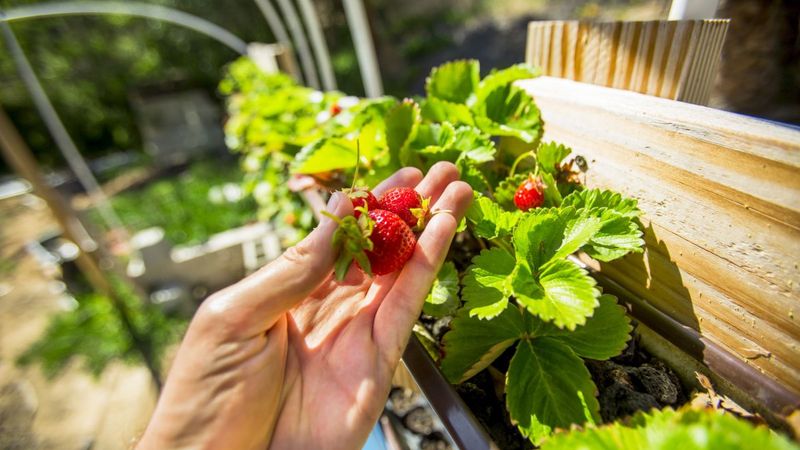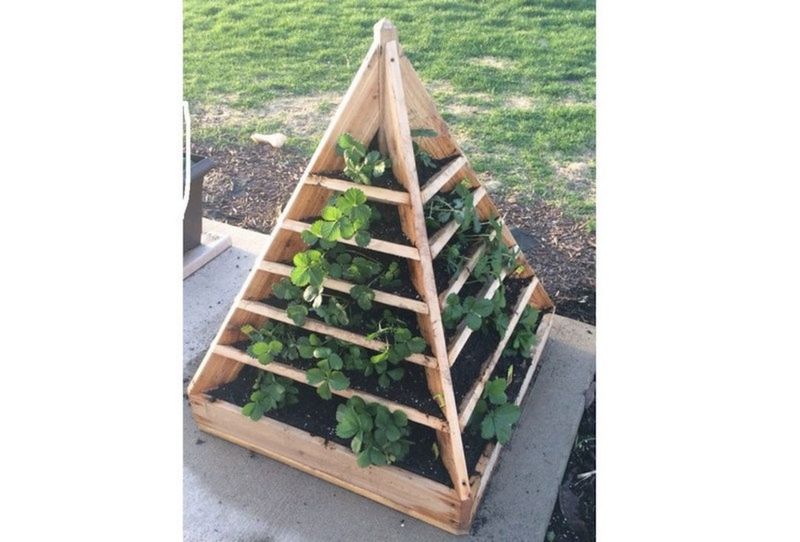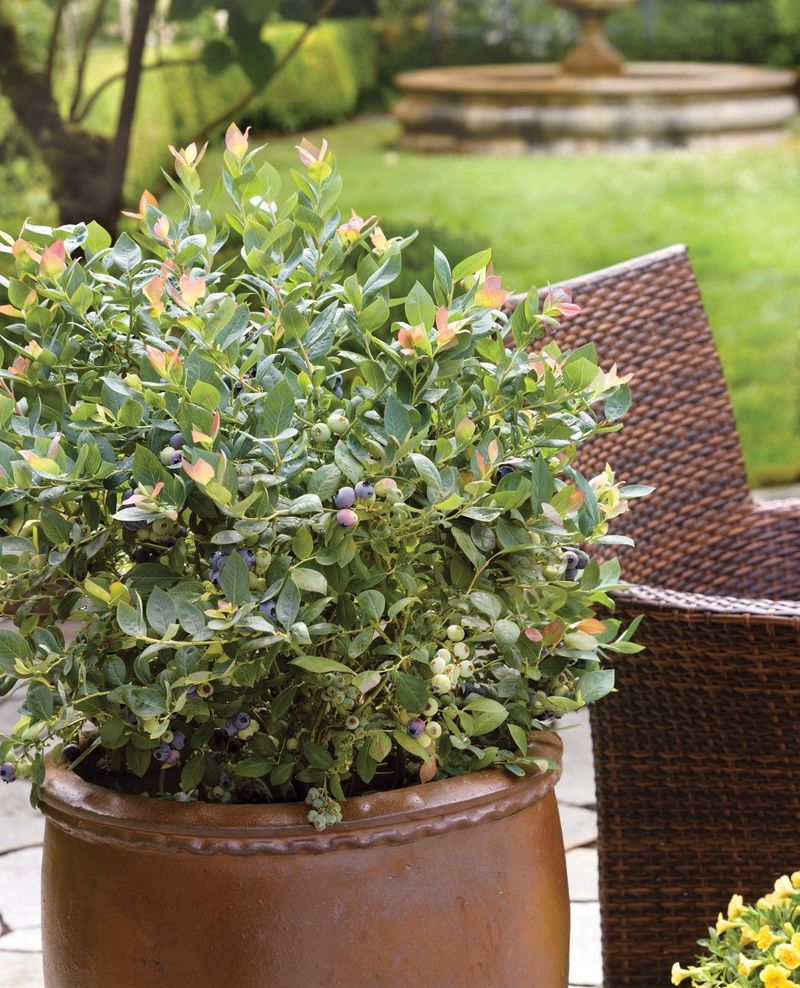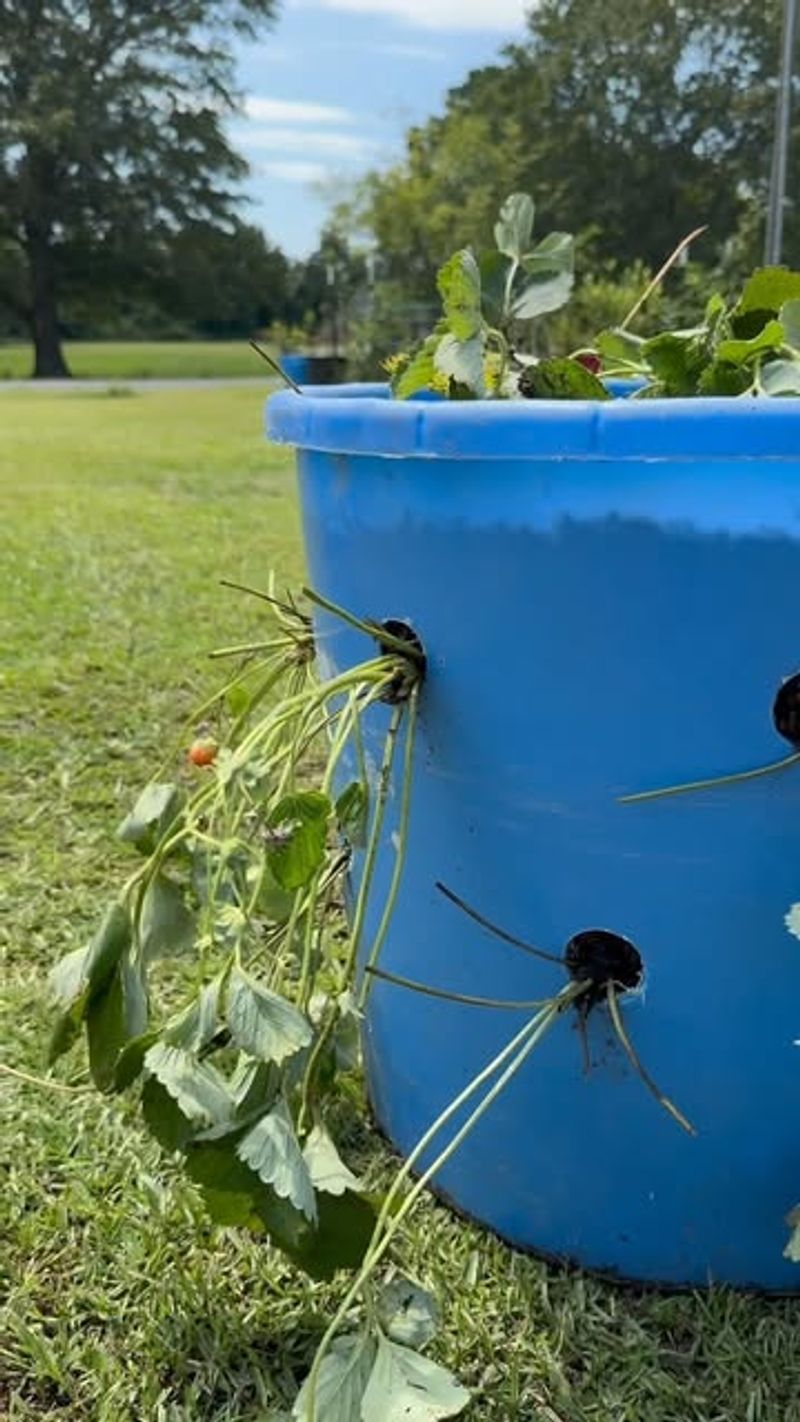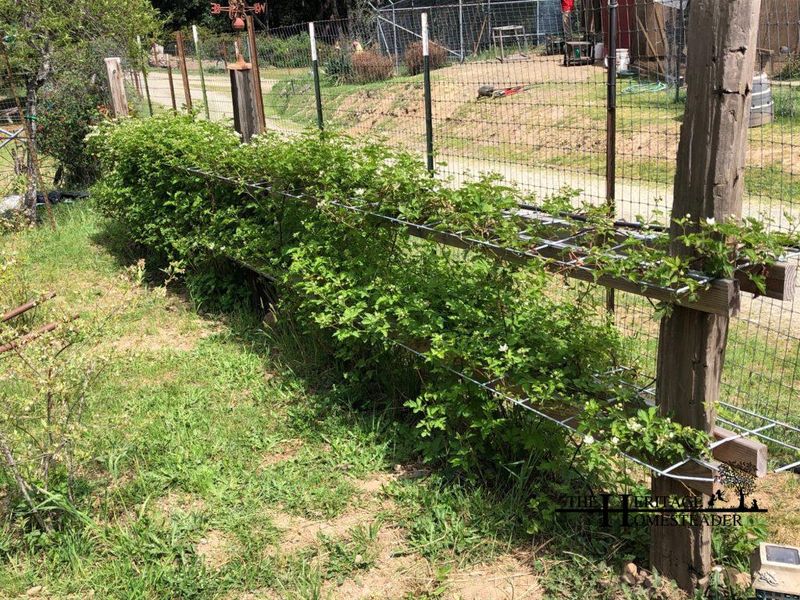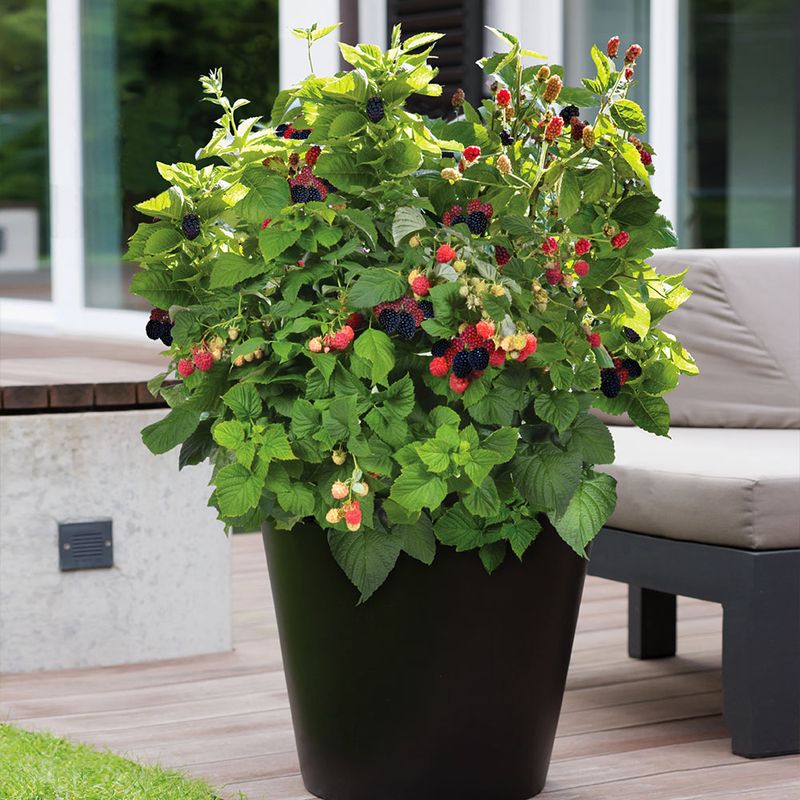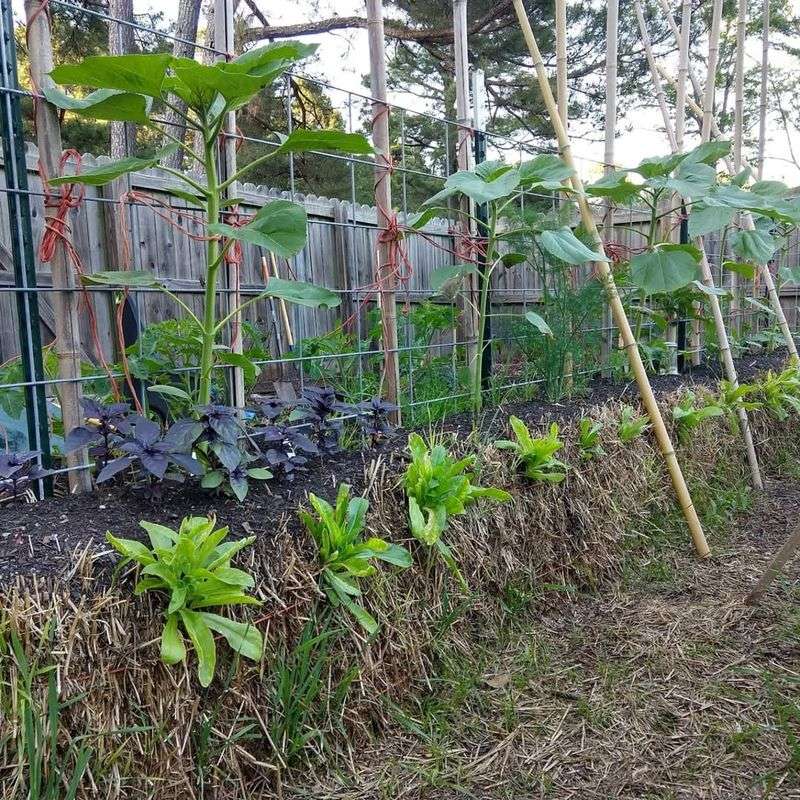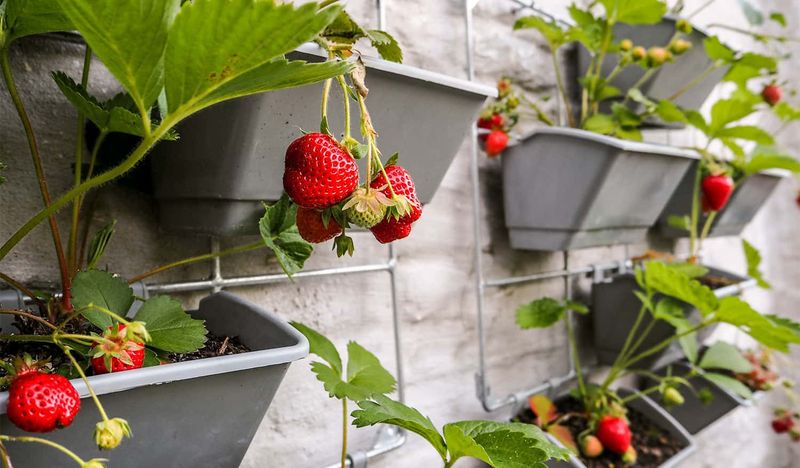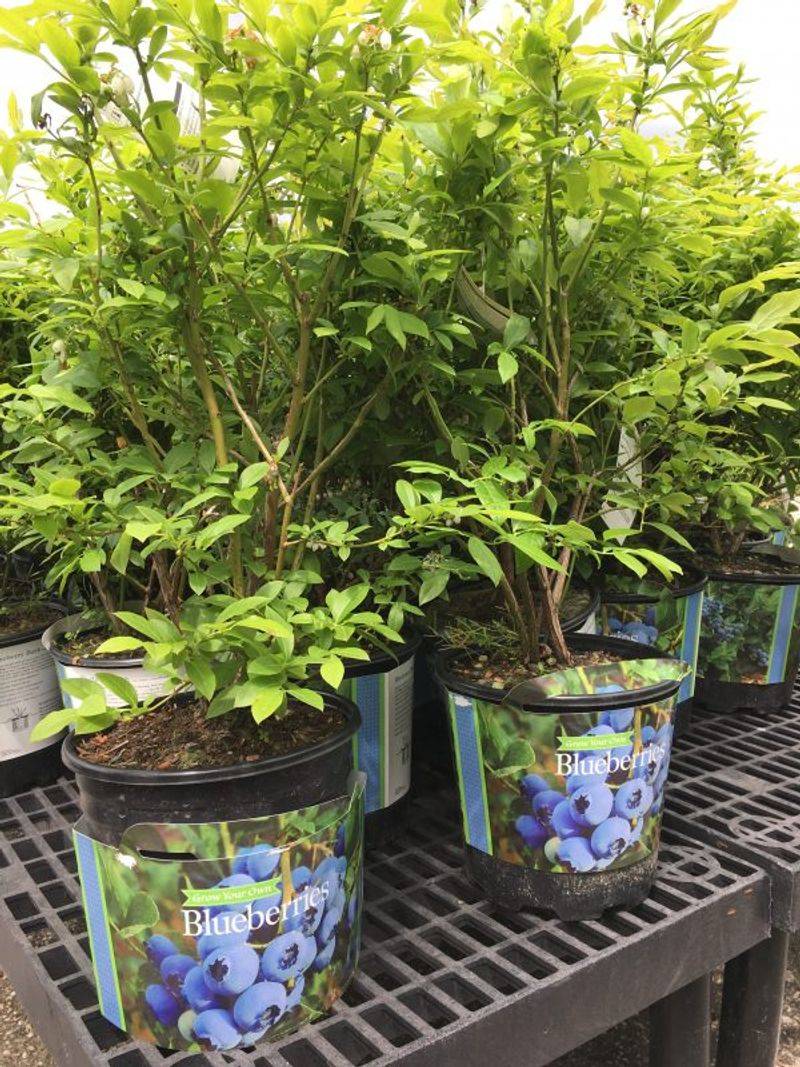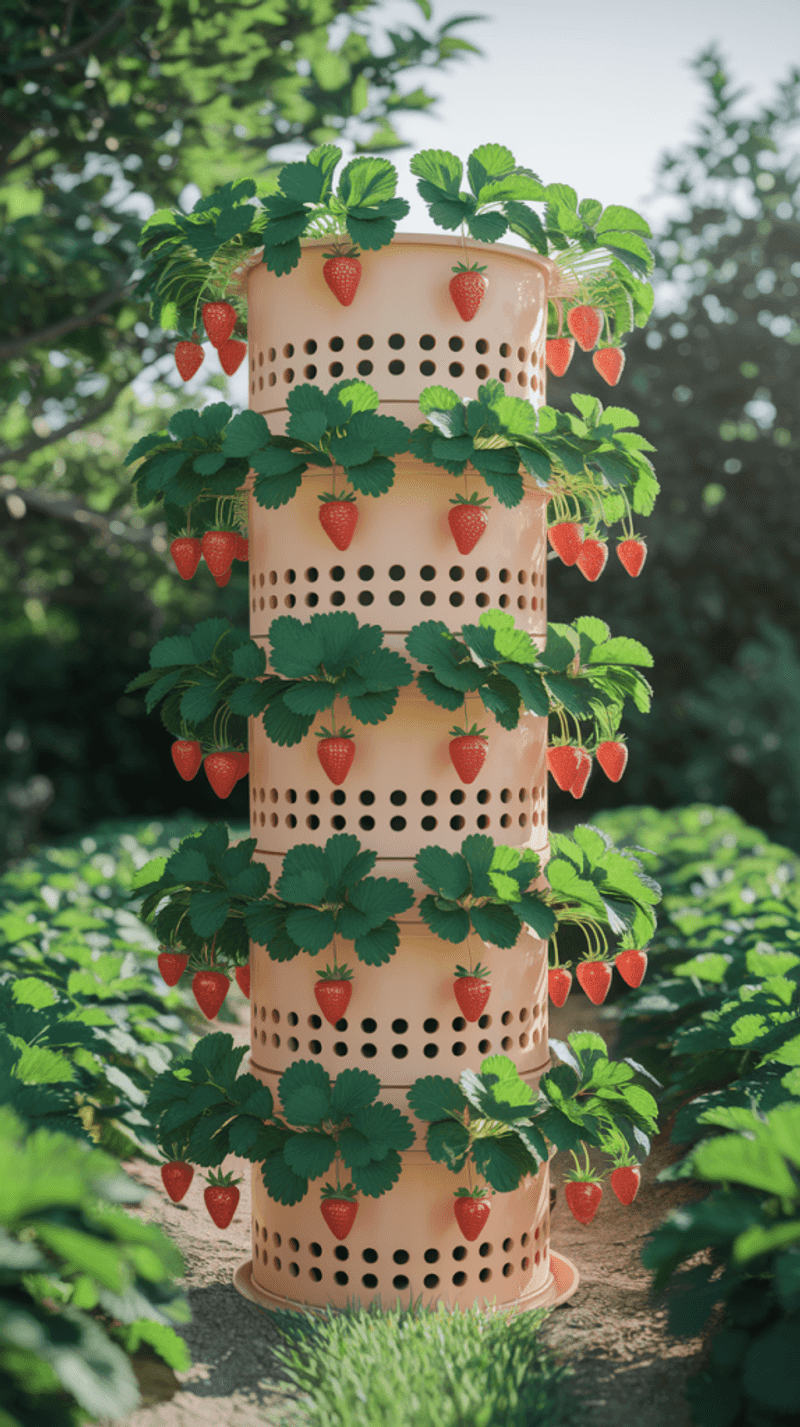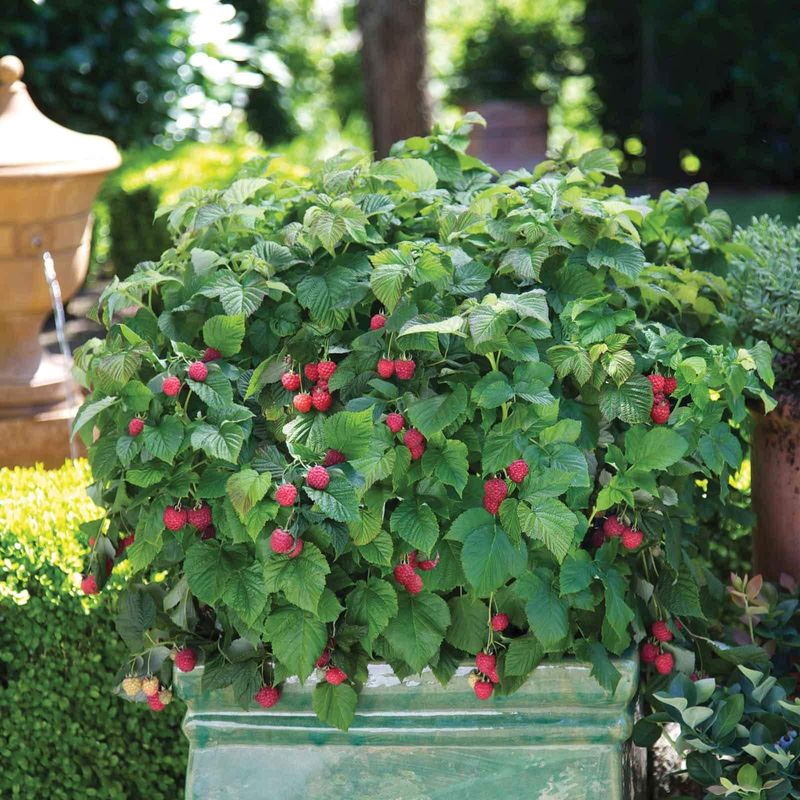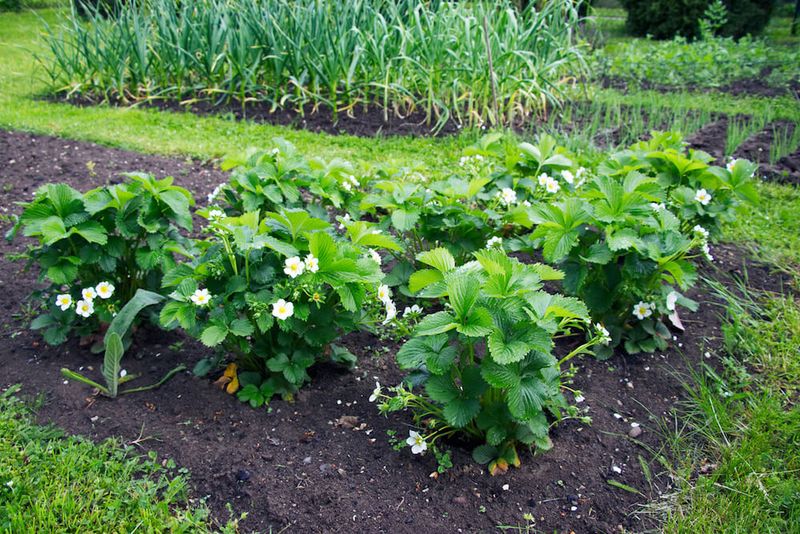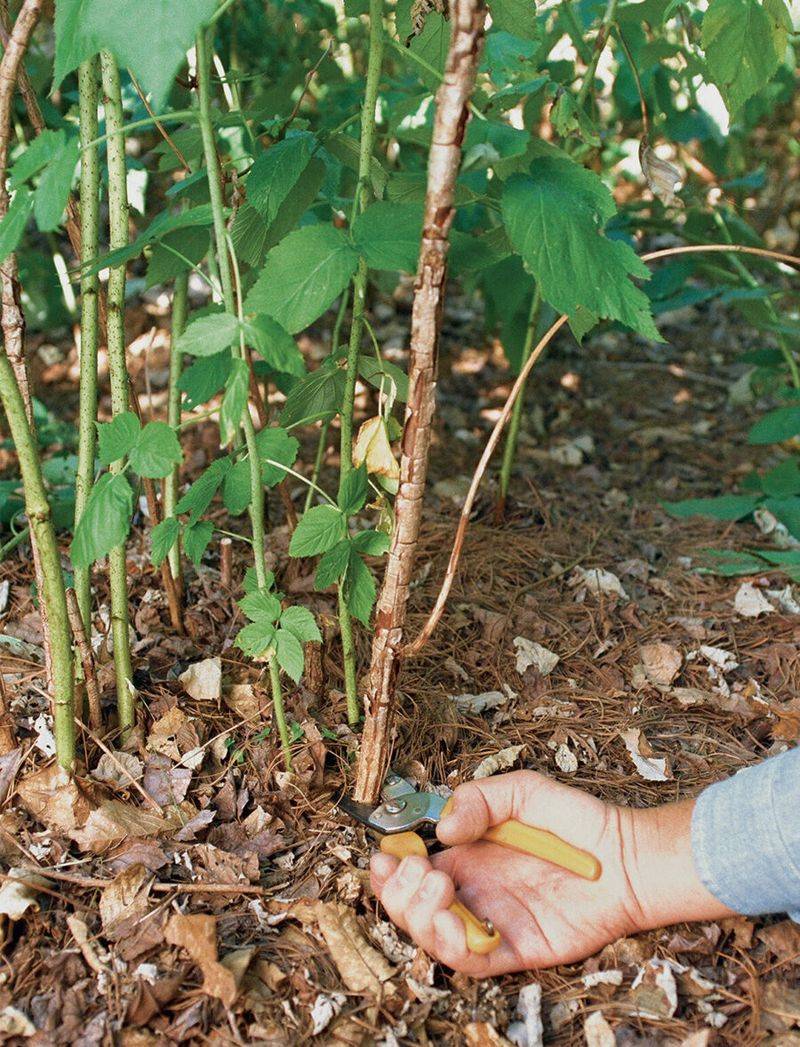Growing your own berries always felt like a luxury to me—something only possible with a big yard and rows of bushes. But I quickly learned you don’t need a lot of space to get that sweet, just-picked flavor at home.
Even in my small backyard, I’ve managed to grow strawberries in hanging baskets and blueberries in pots by the patio. It’s all about being creative with your setup and choosing the right varieties for containers.
If you’ve been craving fresh berries but feel limited by space, don’t worry—you’ve got options. Here are 17 ways to grow a surprising amount of fruit, even in the tiniest garden spots.
1. Vertical Strawberry Towers
You can grow dozens of strawberry plants in the space normally needed for just a few by building or buying a vertical tower. These systems use stacked pots or PVC pipes with holes cut into the sides where plants grow outward.
Last summer, I managed to fit 30 strawberry plants in a corner of my patio using this method. The berries were easy to pick and stayed cleaner since they weren’t touching the soil.
For best results, choose day-neutral or everbearing strawberry varieties that produce throughout the season. Make sure to rotate your tower occasionally so all plants get equal sunlight, and install a simple drip irrigation system from the top to water all levels easily.
2. Hanging Basket Berries
Hanging baskets aren’t just for flowers – they’re perfect for strawberries, trailing blackberries, and even compact blueberry varieties. The plants cascade over the edges, making use of vertical space while keeping fruits at a comfortable picking height.
I’ve found that lining baskets with coconut coir instead of moss helps retain moisture better in hot weather. My hanging strawberries needed less watering and produced more fruit than my in-ground plants.
Choose baskets at least 14 inches in diameter for best results. Plant 3-5 strawberry plants per basket, positioning them around the edges with their crowns just above soil level. Water frequently as hanging baskets dry out faster than ground plantings.
3. Espaliered Cane Berries
Training raspberry and blackberry canes against a wall or fence creates a living berry wall that takes up minimal ground space. This technique, called espalier, keeps unruly canes organized and makes harvesting much easier.
The trick is setting up sturdy horizontal wires about 18 inches apart on your fence or wall. Then tie the canes to these supports as they grow, pruning away any that grow outward rather than along the plane.
After trying this with my raspberries, I’ll never go back to the traditional patch method. Not only did I reclaim about 75% of the space they previously occupied, but I also got better air circulation which reduced disease problems significantly.
4. Gutter Garden Strawberries
Vinyl rain gutters mounted on fences or walls make surprisingly effective strawberry planters. They take up virtually no ground space while providing a perfect growing environment for shallow-rooted strawberry plants.
My neighbor laughed when I started screwing gutters to my garage wall three years ago. Now he’s copying the idea after seeing how many berries I harvested from that previously unused space.
Drill drainage holes every 8 inches along the bottom of the gutter. Cap the ends with gutter caps and hang at a slight angle to ensure proper drainage. This setup works best with June-bearing strawberries, which produce one large crop rather than continuous berries.
5. Pyramid Planter Technique
A tiered pyramid planter multiplies your growing area by creating several levels of planting space. The stepped design exposes all plants to sunlight while occupying the footprint of a single pot.
When building my wooden pyramid, I left about 8 inches between tiers and made sure each level was at least 6 inches deep for root development. Alpine strawberries have thrived in this setup, producing sweet little berries all summer long.
You can either build your own from wood or buy ready-made versions. The sloped sides provide excellent drainage, but they do dry out quickly on hot days. Adding a simple drip irrigation system saves time and ensures consistent moisture levels.
6. Container Blueberry Circles
Group several dwarf blueberry varieties in a circular arrangement to maximize cross-pollination while minimizing space. Using containers lets you control the acidic soil conditions blueberries demand, even if your native soil isn’t suitable.
My patio blueberry circle consists of five 15-gallon containers arranged in a tight circle. Each holds a different variety, ensuring excellent cross-pollination and extending my harvest season from early summer through fall.
Choose containers at least 18 inches deep and wide. Fill with a mix of peat moss, pine bark, and perlite for the acidic conditions blueberries love. The containers can be placed directly on pavement or decking, making this perfect for gardeners without actual garden beds.
7. Upside-Down Berry Planters
Growing strawberries or small trailing berries upside-down frees up ground space entirely. Plants grow through holes in the bottom of suspended containers, with fruits hanging down for easy picking.
After experimenting with different container types, I’ve found that 2-gallon buckets work better than the commercial planters sold in stores. The larger soil volume retains moisture longer and gives roots more space to develop.
Drill a 2-inch hole in the center of the bucket’s bottom. Thread your strawberry plant through from inside, securing it with a piece of sponge around the crown. Fill with lightweight potting mix and hang from a sturdy hook. Water from the top, allowing excess to drain through the planting hole.
8. Trellis Netting For Vining Berries
Installing trellis netting on any vertical surface creates a climbing structure for vining berries like boysenberries and trailing blackberries. The plants grow upward instead of sprawling across valuable garden space.
The plastic netting I used cost less than $10 but completely transformed how I grow my boysenberries. Before trellising, they took up a 6-foot diameter circle; now they occupy a 2-foot wide strip against my fence.
Secure the netting to your fence, wall, or dedicated posts using heavy-duty staples or zip ties. As new canes emerge, gently weave them horizontally through the netting. This technique also improves air circulation, reducing fungal problems common in densely grown berries.
9. Columnar Berry Varieties
Specially bred columnar or pillar varieties of berries grow straight up with minimal side branching. These space-saving plants produce full-sized fruits on a fraction of the footprint of standard varieties.
When I switched to ‘Raspberry Shortcake’ dwarf raspberries in containers, I was skeptical about yield. Surprisingly, each compact plant produced nearly as much as my sprawling traditional varieties while taking up about 80% less space.
Look for varieties like ‘BrazelBerries’ series or ‘Tangy Green’ columnar blackberry. These plants rarely exceed 2-3 feet in width and don’t require extensive trellising. They’re perfect for container growing and can even thrive in pots as small as 10 inches in diameter.
10. Straw Bale Berry Gardening
Straw bale gardening creates instant, biodegradable raised beds that can be placed anywhere – even on concrete or rooftops. The bales provide excellent drainage while slowly composting to feed your berry plants.
I started using this method when my small yard became overrun with tree roots that made digging impossible. The straw bales sit right on top of problem areas, no digging required.
Condition new straw bales by watering them thoroughly and adding nitrogen fertilizer for 10-14 days before planting. This starts the decomposition process that creates a rich growing medium. For strawberries, cut small pockets into the sides of the bales and insert plants directly. Raspberries and blueberries can be planted in the top.
11. Berry Windowboxes
Windowboxes aren’t just for herbs and flowers – they’re perfect for alpine strawberries and compact berry varieties. This technique utilizes unused windowsill space without taking up any garden area at all.
The key is depth – I learned this the hard way after my first attempt dried out constantly. Now I use boxes at least 8 inches deep, which retain moisture much better during hot weather.
Choose day-neutral strawberry varieties or ornamental types like ‘Toscana’ that produce fruit and attractive flowers simultaneously. Plant them 6-8 inches apart, allowing room for runners to develop. Mount boxes securely, as they become quite heavy when watered, and ensure good drainage holes to prevent root rot.
12. Repurposed Rain Barrel Berry Garden
Cut-in-half plastic rain barrels create deep, durable planters perfect for dwarf berry bushes. Their large volume provides ample root space while their height brings the plants up to a comfortable working level.
After a storm damaged my rain collection system, I repurposed the barrels rather than discarding them. Each 55-gallon barrel, cut horizontally, created two 18-inch deep planters that now hold thriving blueberry bushes.
Drill multiple drainage holes in the bottom before filling with acidic potting mix for blueberries or standard mix for other berries. The dark plastic absorbs heat, creating a slightly warmer microclimate that can extend your growing season by a week or two on either end.
13. Spiral Berry Towers
A spiral tower creates multiple planting pockets as it winds upward, offering more growing space than a straight vertical column. These can be constructed from chicken wire, hardware cloth, or even repurposed fencing material.
My first spiral tower was made from an old tomato cage wrapped with chicken wire and lined with landscape fabric. It holds 25 strawberry plants in the space previously occupied by just 6 ground-planted ones.
To create your own, form a cylinder about 12 inches in diameter using sturdy wire. Line with landscape fabric, then fill with potting mix. Cut small X-shaped slits in the fabric and insert strawberry plants. Water from the top, allowing moisture to work its way down through the soil column.
14. Pruning For Compactness
Strategic pruning transforms naturally sprawling berry plants into compact, productive specimens. This technique works particularly well with blackberries and raspberries, keeping them in bounds without sacrificing yield.
I was skeptical about hard pruning until watching my neighbor’s approach. His raspberry patch produces twice the berries mine did while occupying half the space, all through aggressive pruning and training.
For summer-bearing raspberries, remove all canes that have fruited immediately after harvest. Limit new canes to 5-6 per square foot, removing extras at ground level. Top all remaining canes at about 4 feet to encourage lateral branching where most fruit is produced. This creates bushier, shorter plants that need less support.
15. Berry And Vegetable Intercropping
Planting compatible vegetables between berry bushes maximizes production from limited space. The different root structures and growth habits allow both plants to thrive without excessive competition.
When I started tucking lettuce, spinach, and radishes between my blueberry bushes, my overall garden productivity nearly doubled. The shade from the bushes actually helped prevent the greens from bolting in summer heat.
Good companions for berries include shallow-rooted vegetables like lettuce, spinach, and radishes. Plant these in the spaces between bushes where sunlight reaches the ground. Avoid deep-rooted or heavy-feeding vegetables like tomatoes or cabbage, which will compete too aggressively with your berry plants.
16. Pallet Berry Planters
Upcycled wooden pallets transform into space-efficient vertical gardens perfect for strawberries and small berry plants. Standing upright, they provide multiple planting rows while taking up minimal floor space.
My first pallet planter was an experiment that turned into my favorite garden feature. The vertical orientation keeps berries clean and makes harvesting a breeze compared to ground-level plants.
Start with a heat-treated (not chemically treated) pallet. Staple landscape fabric to the back, bottom, and sides, creating a pocket between each slat. Fill with potting soil and plant strawberries in each opening. Lean against a wall or secure to a fence, ensuring it won’t tip over when watered and heavy with growth.
17. Alternating-Year Production System
This clever system divides your raspberry patch into two sections, each fruiting in alternate years. While one section produces berries, the other grows new canes for next year’s crop, effectively halving the space needed.
Implementing this approach saved my small garden from being completely overtaken by raspberry canes. Now I get the same harvest from a much more manageable area.
Start by dividing your raspberry area into two equal sections. In year one, remove all new canes from section A, allowing only existing canes to fruit. In section B, remove all fruiting canes and allow only new ones to grow. The following year, reverse the process. This system keeps plants productive while maintaining a compact footprint.

